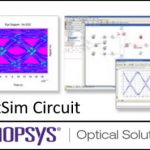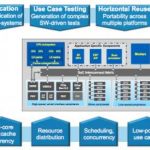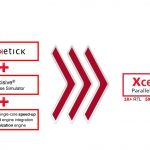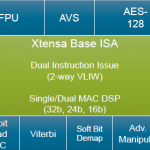Synopsys has long been known for its leading position in the digital logic synthesis world. More recently however, the company started delving into the world of photonic integrated circuit (PIC) design. Synopsys started down this path from the system level with a 2010 acquisition of Optical Research Associates and their CODE… Read More
Electronic Design Automation
Perspective in Verification
At DVCon I had a chance to discuss PSS and real-life applications with Tom Anderson (product management director at Cadence). Tom is very actively involved in the PSS working group and is now driving the Cadence offering in this area (Perspec System Verifier), so he has a pretty good perspective on the roots, the evolution and practical… Read More
Wireless 5G BTS Need Super DSP core… CEVA XC-12
Once upon a time, one wireless base station (BTS) was expected to support one, and only one wireless protocol, like GSM (2G), first deployed in Finland in 1991, or CDMAOne (also 2G) developed by Qualcomm and released through the TIA in 1995. Just a precision: the GSM modem speed was reaching 14.4 Kbps (with only 9.6 Kbps usable by end-user)… Read More
Something New for Semiconductor Parametric Testing
The familiar maxim that “time is money” certainly typifies our semiconductor industry where the mass production of chips, boards and systems helps to power our global economy and ever-increasing standard of living. The foundries that manufacture chips have to ensure that the process technology is in fact producing… Read More
Simulation done Faster
When it comes to functional verification of large designs, huge progress is being made in emulation and FPGA-based prototyping (about which I’ll have more to say in follow-on blogs), but simulation still dominates verification activity, all the way from IP verification to gate-level signoff. For many, while it is much slower… Read More
Prototyping: Sooner, Easier, Congruent
DVCon 2017 is a big week for Cadence verification announcements. They just released their Xcelium simulation acceleration product (on which I have another blog) and they have also released their latest and greatest prototyping solution in the Protium S1. This is new hardware based on Virtex UltraScale FPGAs on Cadence-designed… Read More
PowerTree — a data repository and simulation platform for PCB power distribution networks
The difficulty of managing the power domains on a complex SoC led to the development of a power format file description, to serve as the repository for data needed for functional and electrical analysis (e.g., CPF, UPF). Yet, what about complex printed circuit boards? How can the power domain information be effectively represented… Read More
Searching for Extraterrestrials
Since the beginning of time, people on Earth have peered into the night sky, pondering if they were alone in the universe. Today, we have a large group of scientists that are working to answer that question. The precision required for their search often depends on the performance of a key piece of technology – the analog-to-digital… Read More
New Protocol (NB- IoT) Requires New DSP IP and New Business Model
If we agree on the definition of IoT as a distributed set of services based on sensing, sharing and controlling through new nodes, we realize that these nodes are a big hardware opportunity. The chip makers and IP vendors have to create innovative SoC, delivering high performance at low cost and low energy. Moreover, the new systems… Read More
"Ten-hut!" Attending the Signal Integrity Bootcamp
The engineering team for the design and analysis of a complex system consists of a diverse set of skills — with the increasing emphasis on both high-speed interface design and multi-domain power management, a critical constituent of the team is the group of signal integrity (SI) and power integrity (PI) engineers.
The training… Read More












AI RTL Generation versus AI RTL Verification